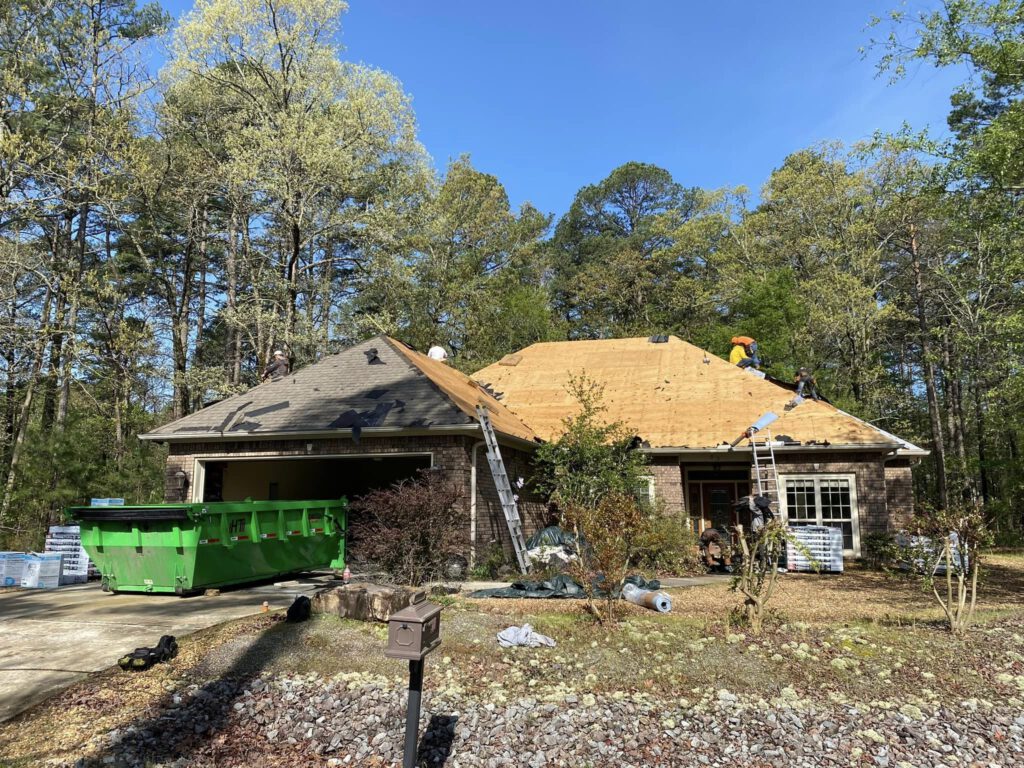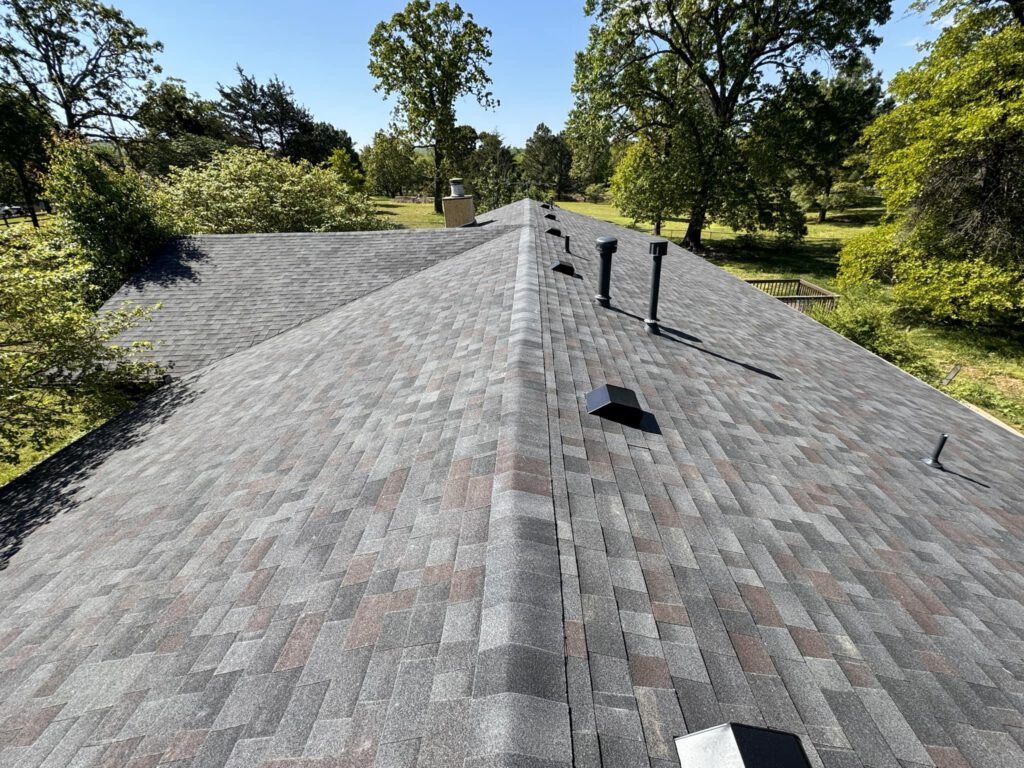
When it comes to your home’s roof, understanding the installation process is vital. From the initial planning stages to the final inspection, each step plays an essential role in ensuring a sturdy and reliable roof over your head. Imagine having the knowledge to oversee the project with confidence, knowing exactly what to expect and how to assess the work being done. Stay tuned to uncover the essential insights that every homeowner should be equipped with when tackling a roof installation project.
- Understand different roofing materials for durability and cost-effectiveness.
- Choose a reputable contractor with experience, references, and insurance coverage.
- Follow a detailed installation process based on roof design and material.
- Conduct regular maintenance for longevity and peak performance.
- Prioritize safety measures during installation and ensure compliance with industry standards.
Key Takeaways
Importance of Proper Planning
Proper planning is vital before starting any roof installation project, ensuring every step is carefully thought out and executed efficiently. As a homeowner, you must consider budget considerations to determine how much you can afford to spend on the project. Research the average materials and labor costs in your area to create a realistic budget that covers all aspects of the roof installation process.
Additionally, effective timeline management is important to avoid delays and ensure the project stays on track. Create a detailed schedule outlining each phase of the installation, allowing for unexpected setbacks.
When planning for your roof installation, remember to consider weather precautions. Weather conditions can greatly impact the progress of the project, so it’s important to schedule the installation during a period of stable weather. Keep an eye on the weather forecast and be prepared to reschedule if unfavorable conditions Regular safety measures conducted es should also be a top priority during the planning stage. Ensure that all workers involved in the installation process are equipped with the necessary safety gear and are trained to follow proper safety protocols. By considering budget, timeline, weather, and safety, your roof installation project will be well-planned and executed smoothly.
Choosing Budget Materials
Choosing the right roofing materials for your home is an important step in ensuring the longevity and durability of your roof. When considering materials, prioritize durability and cost-effectiveness.
Asphalt shingles are a popular choice due to their affordability and decent durability, making them a practical option for many homeowners. If you’re looking for eco-friendly options, consider materials like metal roofing, which isn’t only durable but also recyclable. Metal roofs can last up to 50 years, making them an environmentally-friendly choice in the long run.
For those seeking a balance between durability and aesthetic appeal, wood shakes or shingles can be an excellent option. Wood offers a natural and timeless look while providing good insulation for your home. However, it’s important to note that wood requires regular maintenance to prevent issues like rot or mold.
If you prefer a modern and sleek appearance, consider materials like slate or clay tiles. While these options are more expensive up front, they offer exceptional durability and can last a lifetime with minimal maintenance. Additionally, their unique textures and colors can enhance the curb appeal of your home, adding value and charm.
When choosing roofing materials, weigh the pros and cons of each option to find the best fit for your home.
Understanding Roofing Permits and Regulations
To guarantee compliance with local regulations and guidelines, obtaining the necessary roofing permits is an essential step before beginning any roof installation project. Permit requirements vary by location, so it’s important to research what’s needed in your specific area.
Start by contacting your local building department or visiting their website to understand the permit application process and timeline. Most areas require detailed information about the project, including the type of roofing materials to be used, the scope of work, and sometimes even a blueprint of the project.
Once you have gathered all the necessary information, fill out the permit application accurately. Be prepared to pay a fee, which also varies depending on the location and the scope of the project. After submitting your application, there’s typically a waiting period for approval. This timeline can vary, so it’s important to plan accordingly.
Local regulations ensure that roof installation is done safely and meets certain standards. By obtaining the required permits and following the regulations, you not only avoid potential fines but also ensure the longevity and quality of your roof.
Stay informed about the permit requirements and adhere to the local regulations to make your roof installation process smooth and successful.
Evaluating and Selecting a Contractor
When evaluating and selecting a roofing contractor for your roof project, focus on their credentials and project portfolio. Check their certifications, licenses, and insurance to confirm they’re qualified for the job.
Additionally, review their past work to gauge their experience and quality of craftsmanship.
CONTRACTOR CREDENTIALS
Project Portfolio
How can you determine if a contractor meets the necessary credentials for your roof installation project?
When evaluating a contractor for your roofing needs, check their qualifications and certification. Verify that the contractor holds the appropriate licenses and certifications required by your state or local government. These credentials guarantee that the contractor has met certain standards and possesses the necessary skills for the job.
Next, assess the contractor’s experience in the roofing industry. Inquire about the number of years they’ve been in business and the types of roofing projects they’ve completed. A contractor with a solid track record of successful roof installations is more likely to deliver quality workmanship.
Additionally, consider requesting references from past clients. Contact these references to inquire about their experience working with the contractor. Positive feedback from previous customers can provide valuable insights into the contractor’s professionalism and reliability.
You can evaluate and select a contractor for your roof installation project by carefully reviewing their project portfolio. Start by examining the contractor’s past projects to assess their capabilities in handling various roof designs and color options. Look for diversity in their portfolio to make sure they can accommodate your preferences.
Pay attention to the project timeline and how well they managed the budget for each endeavor. A detailed project portfolio can give you insight into the contractor’s skills, work quality, and ability to meet deadlines.
Additionally, consider contacting previous clients listed in the portfolio for references. This step can provide valuable information about the contractor’s professionalism and communication throughout the project. By thoroughly reviewing the project portfolio, you can make an informed decision and choose a contractor who aligns with your vision for the roof installation.
Preparing Your Home for Installation
Begin by clearing the area around your home where the installation will take place. This is vital to provide the roofing crew with easy access to your roof. Make sure to move any vehicles, outdoor furniture, or decorations away from the work area to prevent any damage during the roof preparation. Additionally, trimming any overhanging branches or bushes near the roof will facilitate the installation process.
Consider weather conditions when scheduling your roof installation. Choosing a time when there’s minimal chance of rain or storms is important. Inclement weather can’t only delay the installation but also affect the quality of the work. Make sure that your roofing contractor takes weather considerations seriously to avoid any potential issues.
Before the installation begins, review your roofing warranty and insurance coverage. Understanding what’s included in your warranty and making sure that your insurance policy covers the installation process will give you peace of mind. It’s important to clarify any doubts with your contractor regarding warranties and insurance to avoid any surprises in the future.
The Roof Installation Process Explained
Once the preparation steps are completed, the roof installation process unfolds in a systematic and efficient manner. Roofing techniques play a vital role in ensuring a successful installation. The first step involves laying down the underlayment, a water-resistant barrier that protects your home from leaks.
This is followed by the application of the roofing material, whether shingles, tiles, metal sheets, or another option. Each material requires specific installation methods to ensure durability and longevity.
The installation timeline varies depending on the size of your roof, the complexity of the design, and the weather conditions. Typically, a standard asphalt shingle roof can be installed in a few days, while more intricate materials or designs may take longer. It’s important to communicate with your roofing contractor to get a clear understanding of the expected timeline for your project.
Experienced roofers will use specialized tools and equipment throughout the installation process to ensure precision and quality. They’ll pay close attention to detail, making sure each shingle or tile is properly placed and secured.
Quality Control and Inspections
When it comes to ensuring your new roof meets standards, an inspection for compliance is essential.
Quality assurance measures are implemented throughout the installation process to maintain high standards.
Before finalizing the project, a thorough final inspection checklist is used to ensure quality and safety.
Inspection for Compliance
How can you ensure that your roof installation meets all necessary compliance standards through thorough quality control and inspections?
Ensuring that your roof installation complies with industry standards is vital for both safety and longevity. The inspection process for compliance involves several key steps that help to verify that the installation has been done correctly and meets all necessary regulations.
Firstly, the inspector will review the compliance standards specific to roofing installations in your area. This step ensures that the inspection focuses on the right criteria.
Next, the inspector will carefully examine the roof to check for proper installation of materials, adherence to building codes, and overall structural integrity. Any deviations from the compliance standards will be noted for correction.
Finally, you will receive a detailed report outlining the inspection findings. This report serves as a record of compliance and highlights any areas that may need attention.

Quality Assurance Measures
To ensure the quality and compliance of your roof installation, implementing rigorous quality control measures and inspections is essential. Here are three key points to make certain your roof meets the highest standards:
- Installation Techniques: Make sure your roofing contractor follows industry best practices for installation techniques. Proper installation methods will enhance your roof’s longevity and prevent issues down the line.
- Roofing Standards: Verify that your roof installation adheres to all relevant roofing standards. Meeting these standards is vital for the structural integrity of your roof and can also affect warranty coverage.
- Warranty Coverage: Confirm the warranty coverage provided by your roofing material manufacturer and contractor. Understanding the terms of the warranty will give you peace of mind and protect your investment in case of any unforeseen issues.
FINAL INSPECTION CHECKLIST
Implementing a thorough final inspection checklist is vital to ensuring the quality and compliance of your roof installation. Before finalizing the process, it’s important to conduct a detailed final inspection.
Start by checking the overall appearance of the roof, ensuring there are no visible damages or inconsistencies. Next, inspect the flashing around chimneys, vents, and skylights to ensure they’re properly sealed and secured. Additionally, examine the gutters and downspouts to confirm they’re clear of debris and functioning correctly to prevent water damage.
Confirm that all safety precautions, such as harnesses and proper footwear, were followed during the installation process. Lastly, review the roof warranty provided by the contractor and familiarize yourself with your homeowner’s responsibilities to maintain the warranty validity.
Post-Installation Maintenance Tips
Proactive attention to upkeep is essential after your roof installation to promote longevity and peak performance. Here are three vital post-installation maintenance tips to guarantee your roof stays in top condition:
- Regular Inspections: Schedule routine inspections at least twice a year, ideally in the spring and fall, to check for any damage, loose shingles, or debris buildup. Addressing issues promptly can prevent more extensive damage and prolong the lifespan of your roof.
- Gutter Maintenance: Keep your gutters clean and free of debris to ensure proper drainage. Clogged gutters can lead to water backup, causing damage to your roof and the interior of your home. Check and clean your gutters, especially after heavy storms should be examined s.
- Trim Overhanging Branches: Trees with branches hanging over your roof pose a risk of falling debris and damage. Trim back any overhanging branches to prevent them from scraping or puncturing your roof. This step also helps maintain proper ventilation and prevents mold growth.
Following these preventative maintenance and weatherproofing tips will help you protect your investment and keep your roof in excellent condition for years.
As you wrap up the roof installation process, remember that the devil is in the details. Pay close attention to each step, from planning and material selection to contractor evaluation and post-installation maintenance.
By taking a meticulous approach and ensuring quality control throughout the project, you can achieve a sturdy and reliable roof that will protect your home for years.
